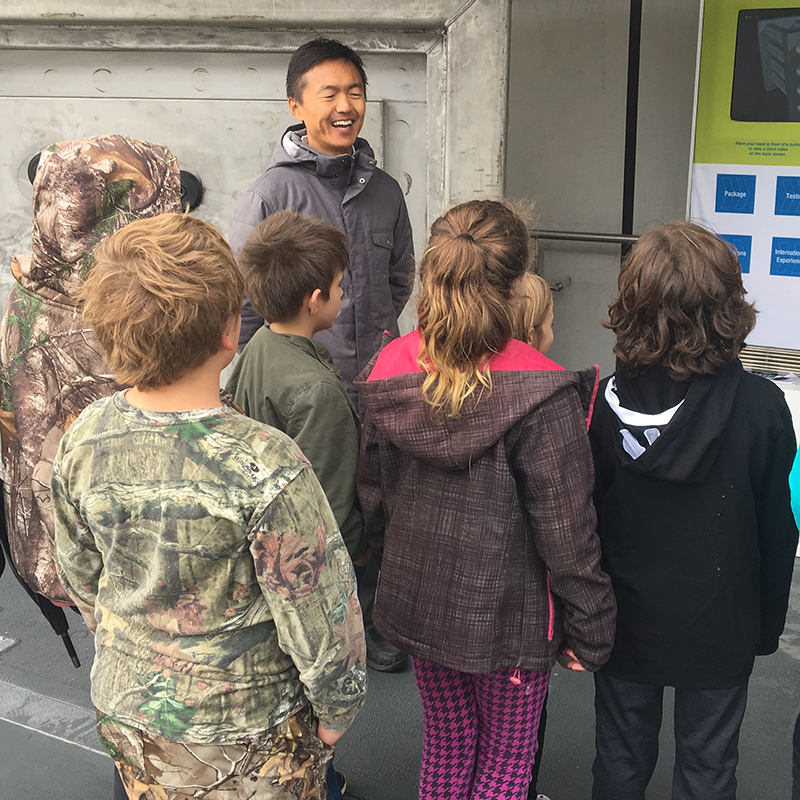In September, the Nuclear Waste Management Organization (NWMO) transportation exhibit was once again in Hornepayne. This provided an opportunity for NWMO staff to meet with many local students. Several classes from secondary and elementary schools took time for a field trip to see the exhibit where it was set up at the Royal Canadian Legion.
“The transport package is incredibly robust” explained Yang Sui, Mechanical Engineer at NWMO. “It is designed to remain tightly sealed even in severe transportation accidents. Canadian Nuclear Safety Commission regulations require transportation packages be tested through drop testing, puncture testing, fire testing, and water immersion testing. Only those packages that meet the regulatory requirements are certified to transport used nuclear fuel. The container on display is one such certified package.”
The exhibit provides people with a hands-on opportunity to learn more about plans for the safe and secure transportation of Canada’s used nuclear fuel. Students and local residents were able to see how containers are designed to protect people and the environment by withstanding severe accident conditions.
Made of a solid stainless steel box with walls nearly 30 centimetres thick, a lid attached by 32 seven-kilogram bolts, and an impact limiter, the container is filled with 192 used CANDU fuel bundles. The containers weigh approximately 35,000 kilograms. Safety is built into every element of the transportation system.
“I’m a visual and tactile learner myself, so I know seeing and touching the actual package really helps students understand the technology involved,” Sui added.
The transportation of used nuclear fuel in Canada is a stringently regulated activity involving both Transport Canada and the Canadian Nuclear Safety Commission (CNSC).
For more on the safe and secure transportation of used nuclear fuel, visit Transportation Planning.

